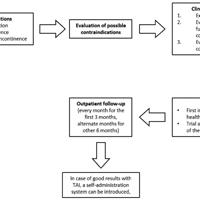Transanal irrigation (TAI) in the paediatric population: Literature review and consensus of an Italian multicentre working group

All claims expressed in this article are solely those of the authors and do not necessarily represent those of their affiliated organizations, or those of the publisher, the editors and the reviewers. Any product that may be evaluated in this article or claim that may be made by its manufacturer is not guaranteed or endorsed by the publisher.
Accepted: 20 April 2021
Authors
Constipation and fecal incontinence in pediatric patients are conditions due to either functional or organic bowel dysfunction and may represent a challenging situation both for parents, pediatricians, and pediatric surgeons. Different treatments have been proposed throughout the past decades with partial and alternant results and, among all proposed techniques, in the adult population the Transanal Irrigation (TAI) has become popular. However, little is known about its efficacy in children. Therefore, a group of Italian pediatric surgeons from different centers, all experts in bowel management, performed a literature review and discussed the best-practice for the use of TAI in the pediatric population. This article suggests some tips, such as the careful patients’ selection, a structured training with expert in pediatric colorectal diseases, and a continuous follow-up, that are considered crucial for the full success of treatment.
How to Cite

This work is licensed under a Creative Commons Attribution-NonCommercial 4.0 International License.






